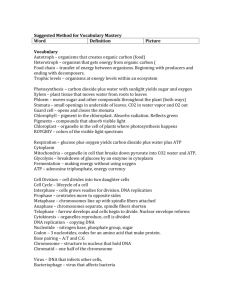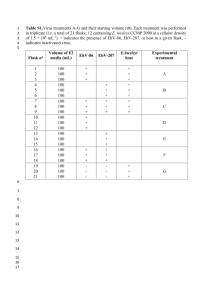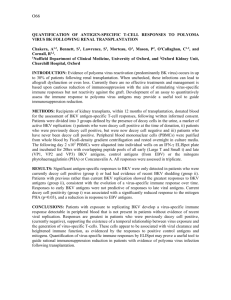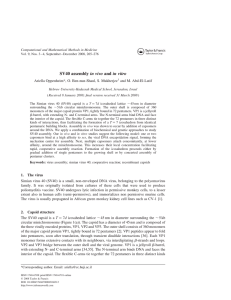Quantitative PCR for detection of three polyomaviruses infection
advertisement
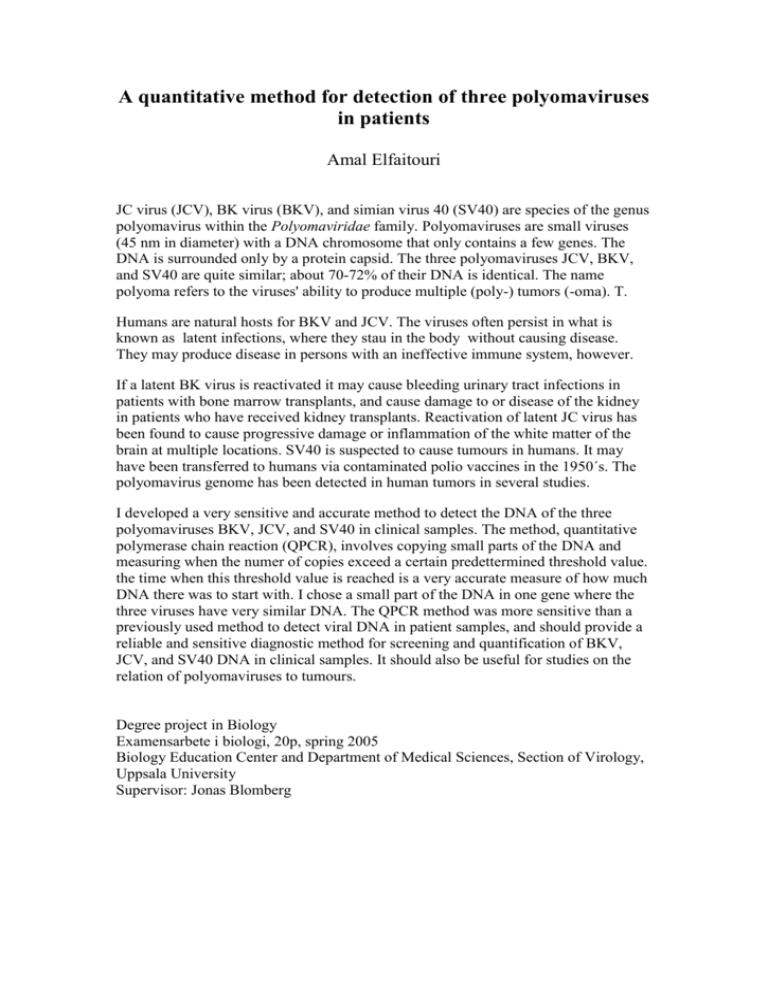
A quantitative method for detection of three polyomaviruses in patients Amal Elfaitouri JC virus (JCV), BK virus (BKV), and simian virus 40 (SV40) are species of the genus polyomavirus within the Polyomaviridae family. Polyomaviruses are small viruses (45 nm in diameter) with a DNA chromosome that only contains a few genes. The DNA is surrounded only by a protein capsid. The three polyomaviruses JCV, BKV, and SV40 are quite similar; about 70-72% of their DNA is identical. The name polyoma refers to the viruses' ability to produce multiple (poly-) tumors (-oma). T. Humans are natural hosts for BKV and JCV. The viruses often persist in what is known as latent infections, where they stau in the body without causing disease. They may produce disease in persons with an ineffective immune system, however. If a latent BK virus is reactivated it may cause bleeding urinary tract infections in patients with bone marrow transplants, and cause damage to or disease of the kidney in patients who have received kidney transplants. Reactivation of latent JC virus has been found to cause progressive damage or inflammation of the white matter of the brain at multiple locations. SV40 is suspected to cause tumours in humans. It may have been transferred to humans via contaminated polio vaccines in the 1950´s. The polyomavirus genome has been detected in human tumors in several studies. I developed a very sensitive and accurate method to detect the DNA of the three polyomaviruses BKV, JCV, and SV40 in clinical samples. The method, quantitative polymerase chain reaction (QPCR), involves copying small parts of the DNA and measuring when the numer of copies exceed a certain predettermined threshold value. the time when this threshold value is reached is a very accurate measure of how much DNA there was to start with. I chose a small part of the DNA in one gene where the three viruses have very similar DNA. The QPCR method was more sensitive than a previously used method to detect viral DNA in patient samples, and should provide a reliable and sensitive diagnostic method for screening and quantification of BKV, JCV, and SV40 DNA in clinical samples. It should also be useful for studies on the relation of polyomaviruses to tumours. Degree project in Biology Examensarbete i biologi, 20p, spring 2005 Biology Education Center and Department of Medical Sciences, Section of Virology, Uppsala University Supervisor: Jonas Blomberg





